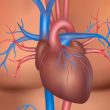After 10 years, unstable or chronic coronary patients revascularized with drug-eluting stents (DES) had similar, very good outcomes regardless of whether the DES did or did not have a polymer, according to the ISAR-TEST-5 study, recently published in J Am Coll Cardiol. The 10-year device-oriented endpoints occurred in 43.8% of patients treated with a polymer-free sirolimus-eluting...
Is the Use of iFR for the Deferral of Left Main Coronary Artery Lesions Safe?
Deferral of left main coronary artery lesions using instantaneous wave-free ratio (iFR) seems to be safe. At the least, patients with deferred lesions had similar long-term prognosis to that of patients who underwent revascularization based on that same indicator. Left main coronary artery lesions were universally excluded from studies including medical treatment among the therapeutic...
Asymptomatic Carotid Artery Stenosis: Do We Have All the Answers?
Advancements in therapies to reduce the impact of stroke in asymptomatic carotid artery stenosis have been hard to come by over the last decade. Several points of disagreement among published randomized trials prevented their information from being integrated into daily clinical practice. However, over the past 5 years, there has been some alignment, allowing for this...
The Most Read Scientific Articles of March
01- Coronavirus and the Heart: How Should Cardiologists Prepare? As the number of confirmed cases increases throughout the globe, a picture is emerging as to what the direct cardiovascular effects of this pandemic may be. Read more HERE 02- TAVR: Should Transradial Approach be the Second Access Site? Courtesy of Dr. Carlos Fava. One of...
Virtual ACC 2020 | Controversial Trial ISCHEMIA Finally in NEJM
In November 2019, during the American Heart Association (AHA) 2019 Scientific Sessions, researchers presented this revolutionary trial that called the attention of all cardiologists. We had to wait until March to read the fine print; back then, a global pandemic such as the current one seemed out of a science-fiction tale. The world has changed...
Treating Both Atrial Valves Improves Survival
Courtesy of Dr. Carlos Fava. There a few treatment options for tricuspid valve disease. It is practically limited to diuretics and surgery, is associated to high mortality and, generally, mitral regurgitation. Developing the “edge-to-edge” strategy with MitraClip has been shown beneficial and, at present, there are studies that claim this technique could be greatly beneficial...
We Should Indicate More than 6 Months of DAPT in Lower Limb Disease
Courtesy of Dr. Carlos Fava. Advanced peripheral vascular disease is frequently associated with cardiovascular events and amputation. It has been proven that mono-antiplatelet therapy (MAPT) offers some benefit (with either aspirin or clopidogrel), but there are scarce data on the role of dual antiplatelet therapy (DAPT) in these patients. Researchers analyzed 404 patients who received MAPT for...
The Most Read Articles of November at Solaci.org
1- AHA 2019 | ISCHEMIA: The Invasive Approach (PCI or Surgery) Results Similar to Optimal Medical Treatment After a several year follow up, the International Study of Comparative Health Effectiveness with Medical and Invasive Approaches (ISCHEMIA) has shown that an invasive approach in addition to optimal medical treatment (OMT) does not offer benefits when it...
Microvascular Angina Could Have Risk Gradients
This study recently published in JACC paves the way to identifying higher risk patients among those with no epicardial coronary artery disease (CAD) that present angina symptoms. Evidence of coronary spasm and increased microcirculation resistance in patients with angina (but with no epicardial obstructive CAD) is associated with increased risk of adverse cardiac events. AT...









